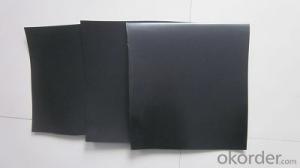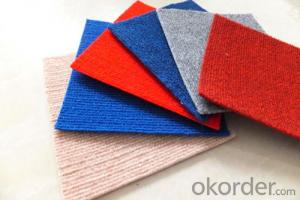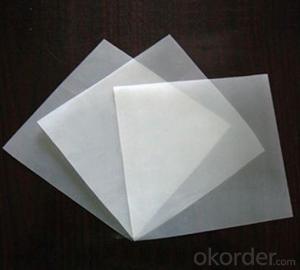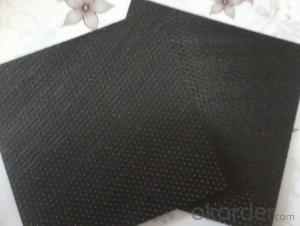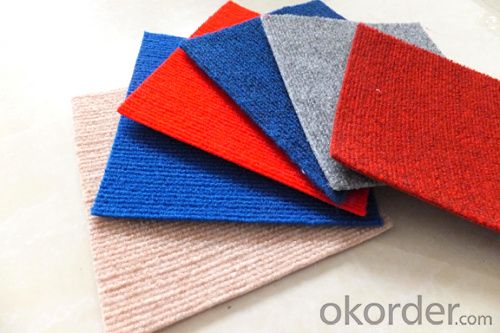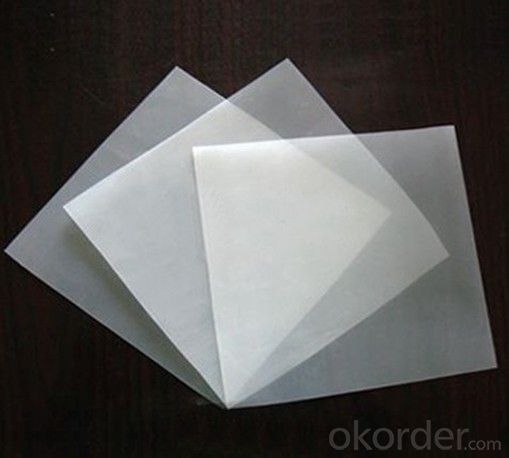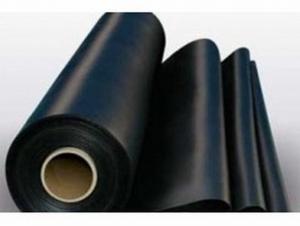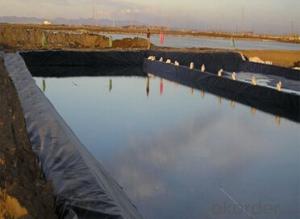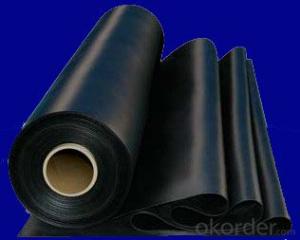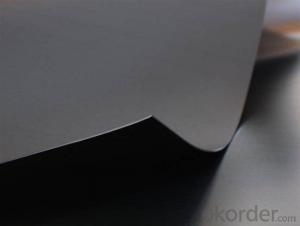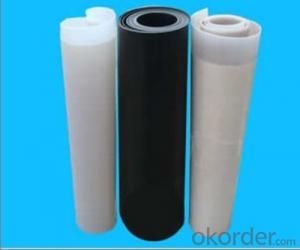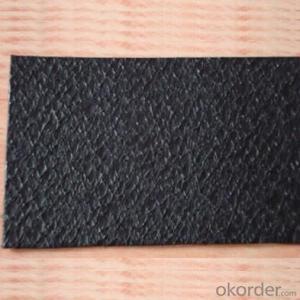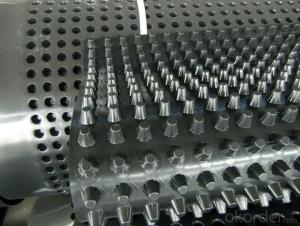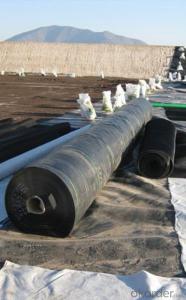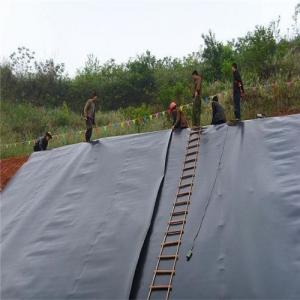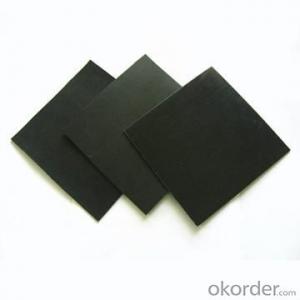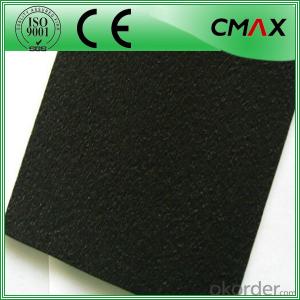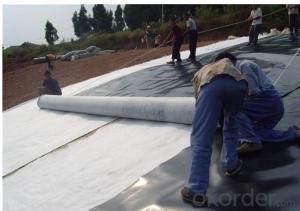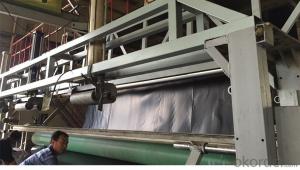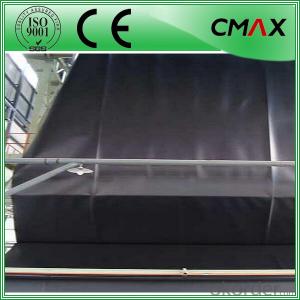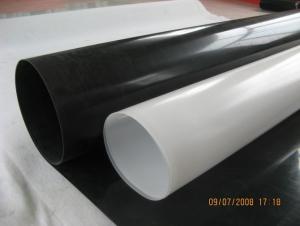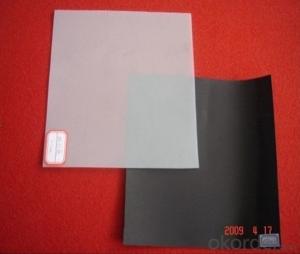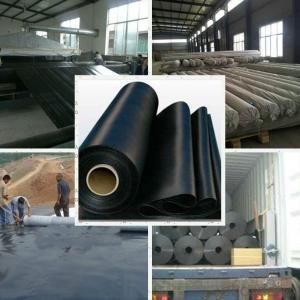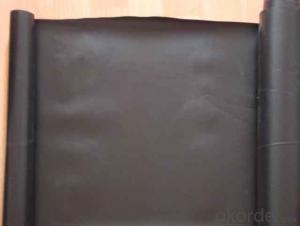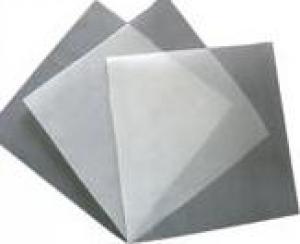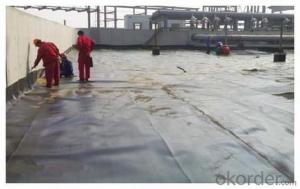LLDPE Geomembrane Liner / Geocomposite / Composite Geomembrane / Geotextile Membrane / Waterproofing Membrane
- Loading Port:
- Tianjin
- Payment Terms:
- TT OR LC
- Min Order Qty:
- 1000 m²
- Supply Capability:
- 900000 m²/month
OKorder Service Pledge
OKorder Financial Service
You Might Also Like
Characteristic
1.Good mechanical properties, high tear strength, deformation and adaptable, puncture resistance, anti-aging, anti-ultraviolet-resistant, Anti oil and salt, pH, anti-corrosion, high temperature-resistant, non-toxic, long service life.
2.Water, drainage, seepage, the good effect of moisture, width, thickness of the full range of specifications and low cost, simple construction.
Table 1
Item | Specification | ||||||||
Nominal breaking Strength (KN/m) | 5 | 7.5 | 10 | 12 | 14 | 16 | 18 | 20 | |
1 | Width Variation % | -1.0 | |||||||
2 | Breaking Strength KN/m≥ | 5 | 7.5 | 10 | 12 | 14 | 16 | 18 | 20 |
3 | Elongation At Break (MD/CD)% | 30-100 | |||||||
4 | CBR Mullen Burst Strength KN≥ | 1.1 | 1.5 | 1.9 | 2.2 | 2.5 | 2.8 | 3.0 | 3.2 |
5 | Hydraulic pressure /Mpa | As table 2 | |||||||
6 | Vertical Permeability Coefficient cm/s | According to request | |||||||
7 | Tear Strength KN≥ | 0.15 | 0.25 | 0.32 | 0.40 | 0.48 | 0.56 | 0.62 | 0.70 |
8 | Peel strength (N/cm) | 6 | |||||||
Table 2
Item | Thickness of geomembrane/mm | ||||||||
0.2 | 0.3 | 0.4 | 0.5 | 0.6 | 0.7 | 0.8 | 1.0 | ||
Hydraulic Pressure/Mpa | Geotextile+ Geomembrane | 0.4 | 0.5 | 0.6 | 0.8 | 1.0 | 1.2 | 1.4 | 1.6 |
Geotextile+ Geomembrane+Geotextile | 0.5 | 0.6 | 0.8 | 1.0 | 1.2 | 1.4 | 1.6 | 1.8 | |
Applicable scope
1) Environmental protection, sanitation (such as solid waste landfills, sewage treatment plants, power plants Chi-conditioning, industrial, hospital solid waste, etc.) .
2) Water (such as rivers, lakes and reservoirs of the anti- dam, plugging, reinforcement of the canal seepage, the vertical wall of the heart, slope protection, etc
3) Municipal Engineering (subway, on the ground floor of the building, planted roof, the roof garden of anti-seepage, sewage pipes lining, etc.).
4) Petrochemical (chemical plants, oil refineries, gas storage tanks of the anti-chemical reaction tanks, sedimentation tanks of the lining, etc.).
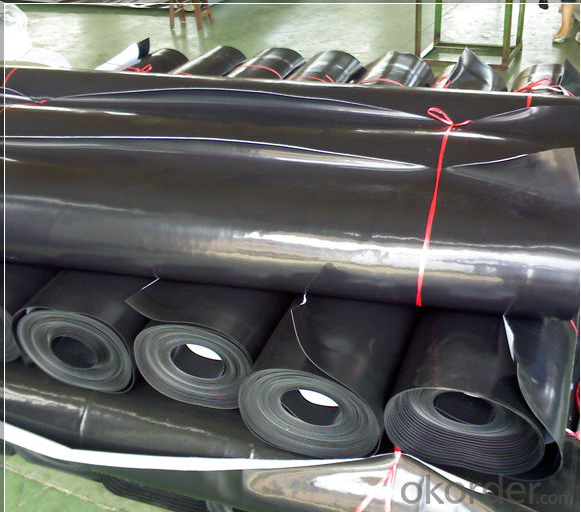
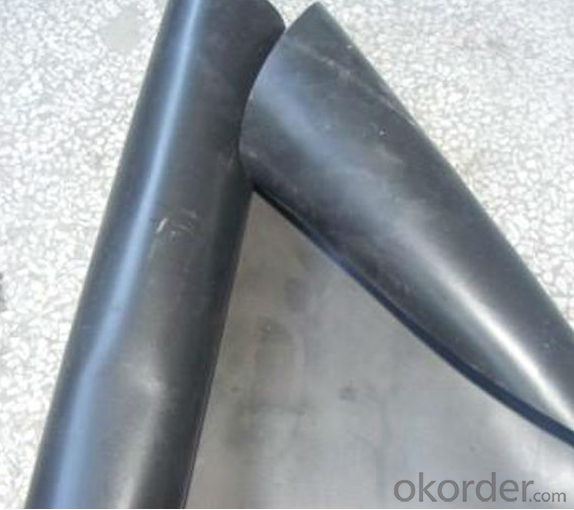
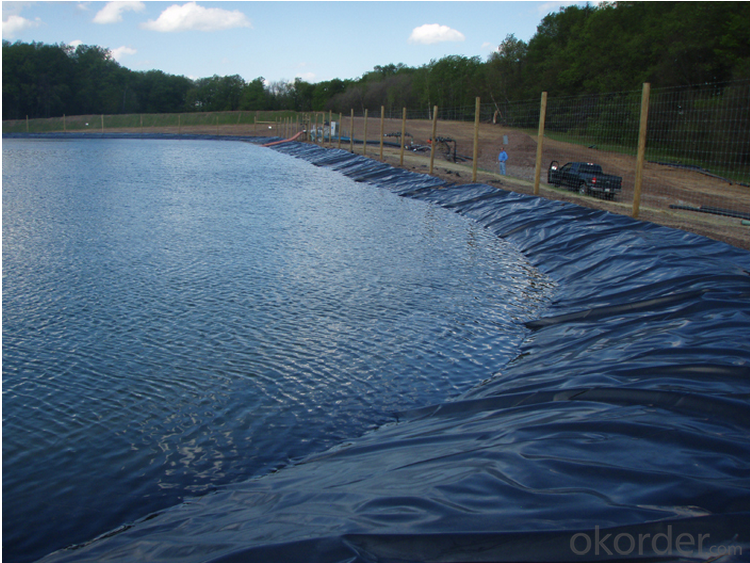
FAQ
How about the delivery time?Lead time since receipt of 30% T/T deposit payment: 3 weeks.(Samples will be prepared within 3 days.)
2.What's are the MOQ?Generally speaking, the MOQ is one container, but we can provide you samples for quality inspection.
3. Do you charge for the samples?Accordeing to our company policy, the samples are free, we only charge the freight fee. And we will return the freight fee during the next order.
4. Can you produce according to customers' design?Sure, we are professional manufacturer, OEM and ODM are both welcome.
- Q: Are geomembranes suitable for use in geothermal energy projects?
- Yes, geomembranes are suitable for use in geothermal energy projects. Geomembranes are flexible and durable materials that can effectively contain and control fluids, making them ideal for lining geothermal well pads and reservoirs. They provide a barrier against fluid leakage, prevent soil contamination, and help maintain the integrity of the geothermal system. Additionally, geomembranes have excellent thermal properties, which can contribute to the overall efficiency and performance of geothermal energy projects.
- Q: How do geomembranes contribute to the prevention of soil erosion in reforestation projects?
- Geomembranes contribute to the prevention of soil erosion in reforestation projects by providing a protective barrier between the soil and external elements such as water and wind. This barrier prevents soil particles from being washed or blown away, thereby preserving the integrity of the soil and reducing erosion risks. Additionally, geomembranes help retain moisture in the soil, promoting healthy plant growth and aiding in the establishment of newly planted trees during reforestation efforts.
- Q: What is the principle of electrothermal?film bed?
- The conversion rate is close to 100% when converting the electrical energy into thermal energy, so its heating effect is better than that of floor heating.
- Q: How to install the electrothermal?film?
- 1, Cleaning the ground and paving the extruded sheet of 2-3 cm thick. 2, Tailoring and laying the electrothermal film side by side according to the requirement. 3, Connecting the electric heating film parallelly (according to the standard construction connection drawings, single electrothermal membrane should not exceed 10 meters). 4, Using special tool to connect firmly the special clips with the electrothermal film metal loading bar and connecting the electric wire. 5, Wrapping connected parts with insulating plaster to prevent water and ensure insulation. 6, Allocating the air switch according to the total power, connecting the thermostat and sensor and putting the probe of the sensor probe into the area of the ground that is the easiest to be heated to prevent the heating film from being overheated. 7, adding the drive pipe to the sensor, cutting the drive pipe at the head of the sensor and sticking the sensor to the heated carbon strip of the electrothermal film with insulating plaster. 8, Checking it. 9, Wrapping the electrothermal film with waterproof cloth (for cement construction) or paving non-woven fabric (for floor or the floor sheet construction). 10, Starting the temperature controller to measure the temperature. 11, paving the geothermy plastic net, pouring cement mortar, inlaying floor tiles (cement construction) and paving the floor (floor construction) 12, The construction is completed.
- Q: Application characteristics of geomembrane
- Functions: Seepage-proof, isolation applications: Refuse landfill, sewage or offscum disposal plant seepage-proofing. embankment, lake dam, tailings dams, sewage dam and reservoir area, channels, hydraulic accumulating pond (pit, mine). Subway, basements and tunnels, tunnel anti-seepage lining. Roadbed and other foundation salt marsh seepage-proofing. Horizontal impervious blanket in the front of dyke and dam, foundation vertical impervious barrier, the construction cofferdam, waste storage. Seawater, freshwater farms. Roads, highways, railways foundation; expansive soil and waterproof layer of collapsible loess. Roofing seepage-proofing. Product: Including LDPE geomembrane, LLDPE geomembrane, HDPE geomembrane, EVA geomembrane, ECB geomembrane, PVC geomembrane, matte geomembrane. PVC geomembrane technical index serial number items I Type II Type 1 tensile strength ≥ 8. 0 12. 0 2 breaking elongation rate % 200 250 3 heat treatment dimensional change rate % 3. 0 2. 0 4 low temperature buckling ℃ -20 ℃ flawless -25 ℃ flawless 5 puncture resistance 6 imperviousness impermeable
- Q: How do geomembranes help with water conservation?
- Geomembranes help with water conservation by acting as a barrier to prevent water seepage, evaporation, and contamination. They are used in various applications such as reservoirs, ponds, and irrigation systems to effectively store and retain water, reducing the need for additional water resources. Additionally, geomembranes also aid in controlling soil erosion, thus minimizing water loss due to runoff. Overall, their use promotes sustainable water management practices and helps conserve this precious resource.
- Q: What are the advantages and disadvantages of ceramic and metal film membrane?
- (1) metal film in the 1990s is developed by the United States. it is mainly a porous and stainless steel substrate, TiO2 ceramic coating material is a new type of metal - ceramic composite inorganic membrane. (2) the advantages of a metal film is good ductility, toughness and strength, as well as adaptability to environment and material. It is one of the best film material after a ceramic membrane is developed. Ceramic membrane material is acid and akali resistance, anti chemical solvents, high temperatures resistant, especially with high mechanical strength, long service life. It has obvious advantages in harsh environments. The disadvantage is that the application of ceramic membrane is not wide enough, although it is nanoscale separation precision. ceramic membrane has a small market, but there is no ceramic membrane that can not filter. .
- Q: What is geosynthetics reinforced base?
- Concrete structure.
- Q: Can geomembranes be used in stormwater treatment and filtration systems?
- Yes, geomembranes can be used in stormwater treatment and filtration systems. They act as barriers to prevent the migration of pollutants, provide a stable base for filtration media, and can be used in various applications such as sediment ponds, retention basins, and biofiltration systems.
- Q: Can geomembranes be used in agricultural applications?
- Yes, geomembranes can be used in agricultural applications. They are commonly used for lining irrigation canals, ponds, and reservoirs to prevent water seepage and maintain water quality. Additionally, geomembranes can be used for covering silage pits to reduce spoilage and improve nutrient retention.
Send your message to us
LLDPE Geomembrane Liner / Geocomposite / Composite Geomembrane / Geotextile Membrane / Waterproofing Membrane
- Loading Port:
- Tianjin
- Payment Terms:
- TT OR LC
- Min Order Qty:
- 1000 m²
- Supply Capability:
- 900000 m²/month
OKorder Service Pledge
OKorder Financial Service
Similar products
Hot products
Hot Searches
Related keywords
